Tech Tuesday: ROI for the Engineer (CE & EOR) | Qnect
Are you a structural engineer - a Connection Engineer (CE) or an Engineer of Record (EOR)?Qnect's SaaS solution provides a solid Return on Investment...
10 min read
Pearl Burgoff
:
Dec 2, 2019 5:16:19 PM
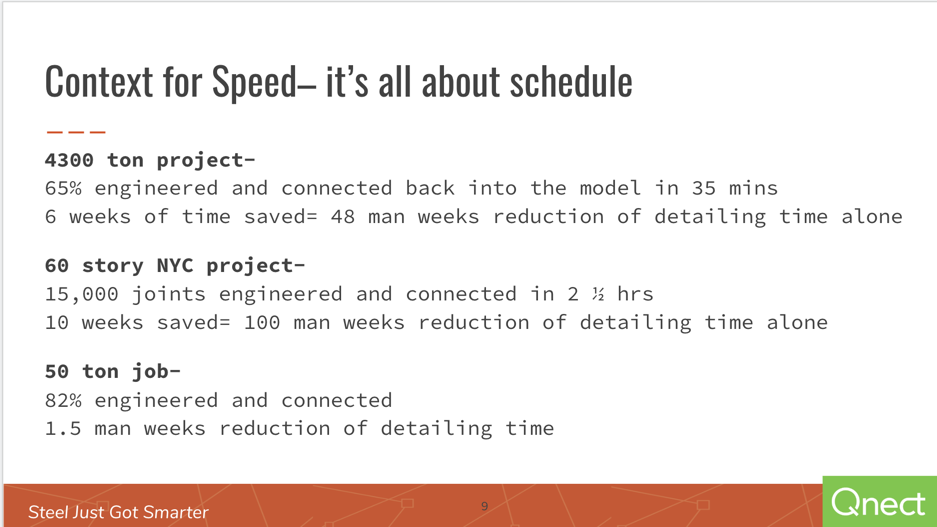
This special GC-focused webinar took place on November 20th, 2019. The webinar focuses on reducing time to construction for the general contractors. Learn about the connected model, preventing schedule drift, getting uniform bids from fabricators and much more. Qnect provides so much more than software and super service to help them be more successful.
In this special webinar, you will learn:
The video directly below is 10:25 in length and is a shorter version than the video with the transcription. We've included the shorter video here first. If you'd like to view the entire, unedited video please see below.
Hello everyone and welcome to today's webinar for general contractors “How to Reduce Time to Construction its Schedule, Schedule, Schedule.” Today's webinar will be hosted by Henry Letterman and he'll be taking us through the content which will be followed by a short Q&A. As always we're happy to speak with your team after the webinar if you have, you know, specific questions so please feel free to reach out to us. With that Henry please walk us through the webinar.
Thank you Aaron, for that introduction. We appreciate everybody's time on the GC webinar. So the agenda for today. We will talk a little bit about:
So let's get started.
So who are we? We were founded in 2014 by Jef Sharp our CEO on the left; myself in the middle; Jeff Hausthor, on the right is the IT specialist with a Fortune 500 background. I've been detailing for 47 years. (I) did the World Trade Center Memorial Museum and several 60 story buildings along with a slew of many projects as you can well imagine. Jeff and Jef have built many companies in their career.
So what do we do? We integrate connection engineering and detailing extremely fast and that's really the key. Extremely fast, which is where it matters and will matter to you in a delivery of your projects and we do that while lowering costs.
So what are the benefits? Primarily, importantly we prevent schedule drift. We get steel on the site earlier - it's all about schedule. I think everyone on this call would appreciate that those are important things; especially that the (probably) number one pervasive issue in our industry is schedule drift due to the burden of changes, RFI's, design bulletins, conflicts coordination.
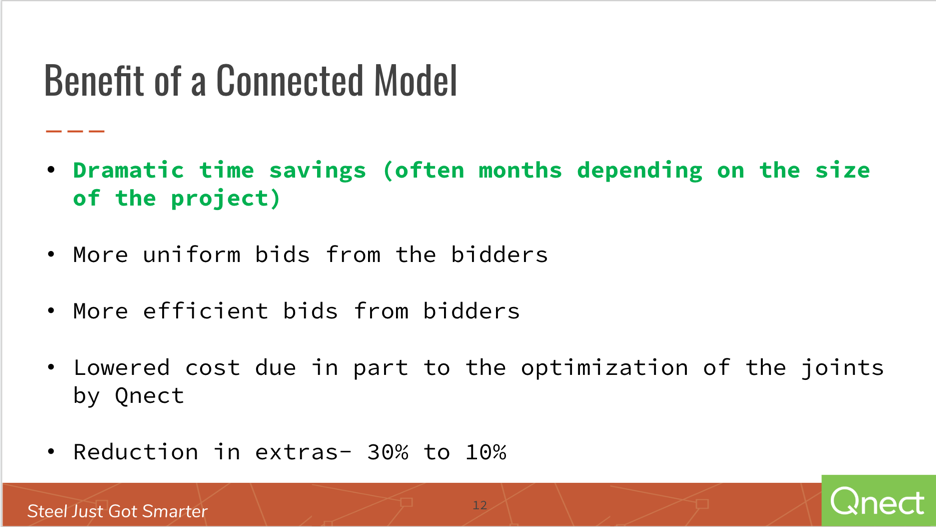
Now, to show you how. We'll start by bringing you to our website where you'll see that we set up a job. (It’s) the demo job. And here really we have all of the general very flexible preferences that one would need to develop the job standards to engineer the connections and to put them back into the model on any project. So minimum job requirements etc. This gets filled out early and once that's done these parameters define the design of the joints for the life of the project.
Let me take you to a project when once you set up on Tekla. This is working with the Tekla platform. You'll download our (Qnect) app. You will see we start with a stick model it's nothing in it and we will select a joint, a floor, a sequence, the whole building and we'll send it up to the website. We've already done this. We would just to show you. We'll call it GC - 1. We would submit and I'll just show you how that would know what that would look like. We would submit and Qnect is basically pulling out the data from the model, the profiles, the geometry, elevation skews, any forces in the model (and) takes it up to the website, organizes it by beam-to-beam, beam-to-column flange, beam-to-column web and returns it back down into the model fully detailed, fully engineered.
So let's return one that we did previously for time reasons. We'll submit and now the connections are being pulled back down into the model. This is a 50-ton model and you will see that it really doesn't matter when it's 50 tons or a hundred thousand tons - Qnect is able to engineer and detail back into the model within the same day, in minutes, hours - the same day - no matter that size. We design every connection as a custom connection that's what makes it so efficient. We also do detailing which dramatically reduces the steel detailing time on the project.
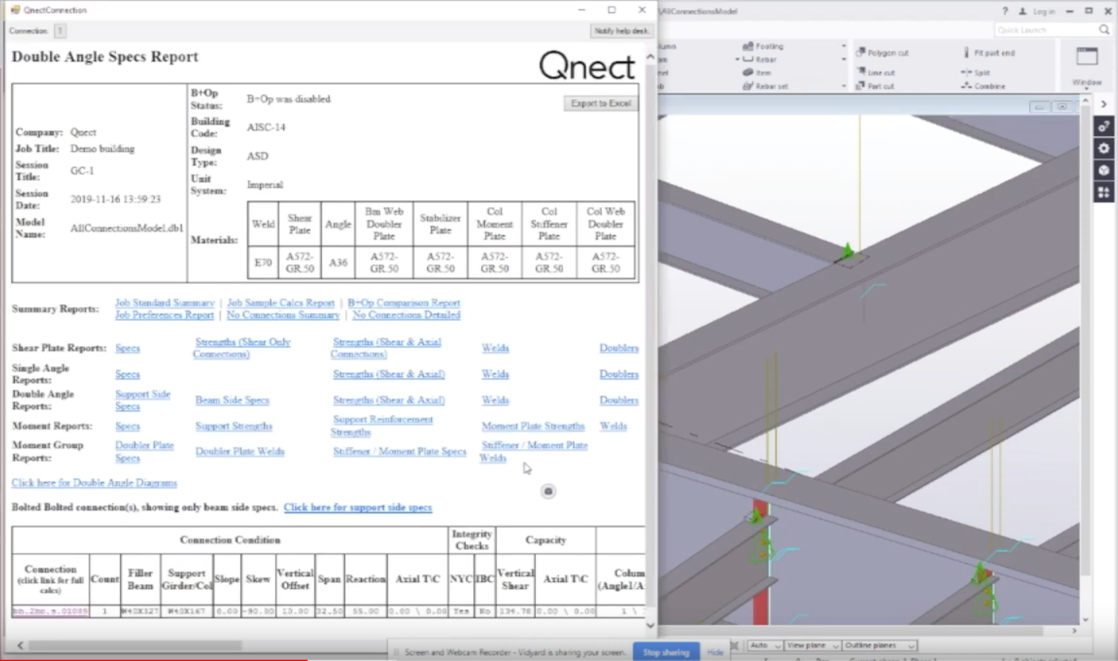
This is completed. As you can see the connections are in double angle shear plate. Here we have a moment connection for pan weld. We also do top and bottom moment plates you can see stabilizer plates, stabilizer plates with top and bottom stabilizers or without. Yes, one would stabilize a plate and connections to embed with plate washers. So suffice to say for your purposes that the connections are done for about sixty to eighty percent on this 50-ton project about 82 percent. It's fully engineered and it only took about a minute and a half to do. A job this size would save the detailer about four days of time.
So that in and of itself is pretty extraordinary and we'll talk a little bit about that but first I just want to show you that at every single joint all of the engineering is there the size of bolt the angle size, etc. Then if we go into the code. We'll see the full text AISC, all of the limit states and a full engineering that goes with it. We have been validated by many many engineer of record and connection engineers so our engineering is fully complete and accurate without a question about that.
Alright so that's the process. It's always the same but move on Button 2. 60 to 80% of the connections fully engineered and detailed back into the model.
Let's talk about that because we could stop the webinar right here because it defines the critical aspect of our delivery in terms of schedule. As a matter of context:
There are other ways we reduced the time but from a detailing standpoint this context is important. We're working on 3 60-story buildings in New York City. We had 15,000 joints engineered and connected in two and a half hours, ten weeks saved, eight which was out at a hundred man-weeks reduction of detailing time alone.
This 50-ton job: 82% engineering connected one-half man-weeks, reduction of detailing time. So it doesn't matter the size of the project whether it's 50 tons or 80 tons. And we are working on a project that size currently. The model will be engineered and connected for about
65 to 60 to 80% and it will be done so within 24 hours of the model being completed.
So imagine your job and what that would mean to the delivery of your steel to have so much done on day one.
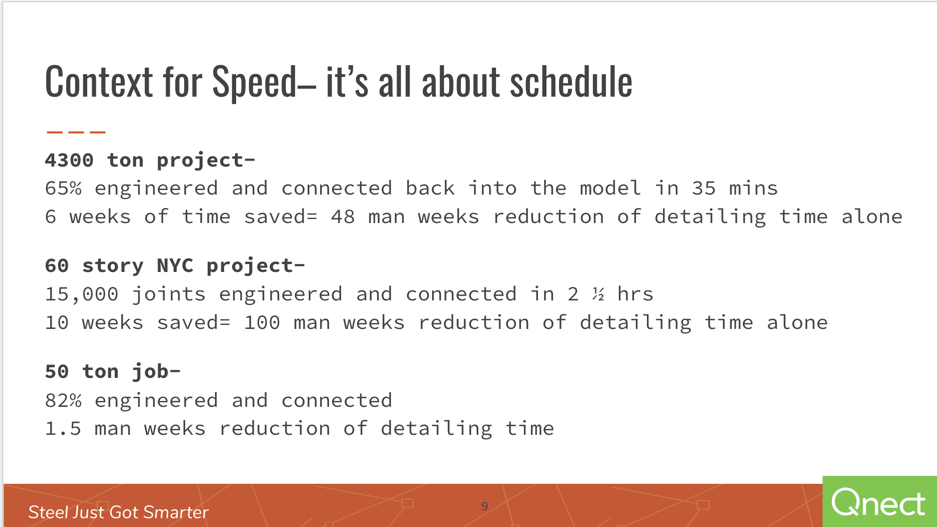
This is also possible in the estimating stage where we work with general contractors to provide new VE (Value Engineering) items to support their bid to fabricators. We do that to support fabricators as well. So there are many places to avail yourself of the service. But ultimately, the speed and the power this software produces extraordinary opportunities on preventing schedule drift.
But we don't stop there.
Let me now show you another way that we prevent schedule drift which has to do with revisions as we all know the jobs fall apart. They fall apart under the burden of RFI's, design changes , late coordination clashes of different trades and so while we create this extraordinary amount of buffer time on the front end we also contain schedule drift by the speed of revision.
“When we convinced the owner to allow us to prepare a connected model prior to bid we picked up three to four months.”
Allen Paull, Sr. VP, AECOM Tishman
So let's do a revision and we'll go here. We'll change the beam size to a 4331. We apply. We say ok. The minute we hit modify our engineering tool comes up we will re-engineer. For this change, you will notice that all the connections were pulled and we'll call this GC. Let's say our RFI-1 because that's tracked. We will submit it up to the website and instead of hitting button 2 with revisions it just comes back down automatically. So we're waiting for this to complete again they'r odel and they have to check that it was interpreted right when put back in the model.
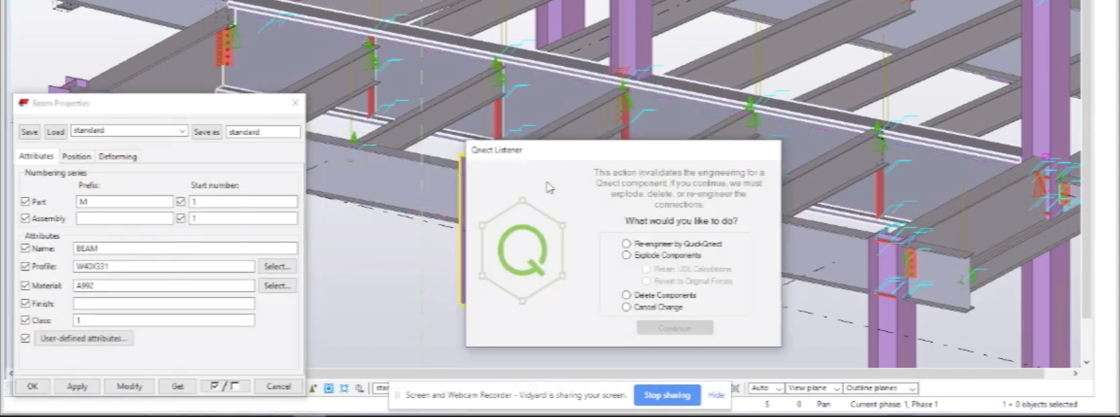
It's quite a process. We integrate those two things in one step extraordinarily fast. We also carry the Qnect full connection engineering package or contract where we will a connection engineer partner will stamp our work, finish the standards that we didn't do, in the conventional way and stamp those and deliver a full package.
So these two elements are the way we are able to produce so much time savings and prevent schedule drift.
Now I'd like to show you how we lower cost and we're going to do that by activating our optimization tool. To do that we simply do bolt optimization and now we'll go back to the model.
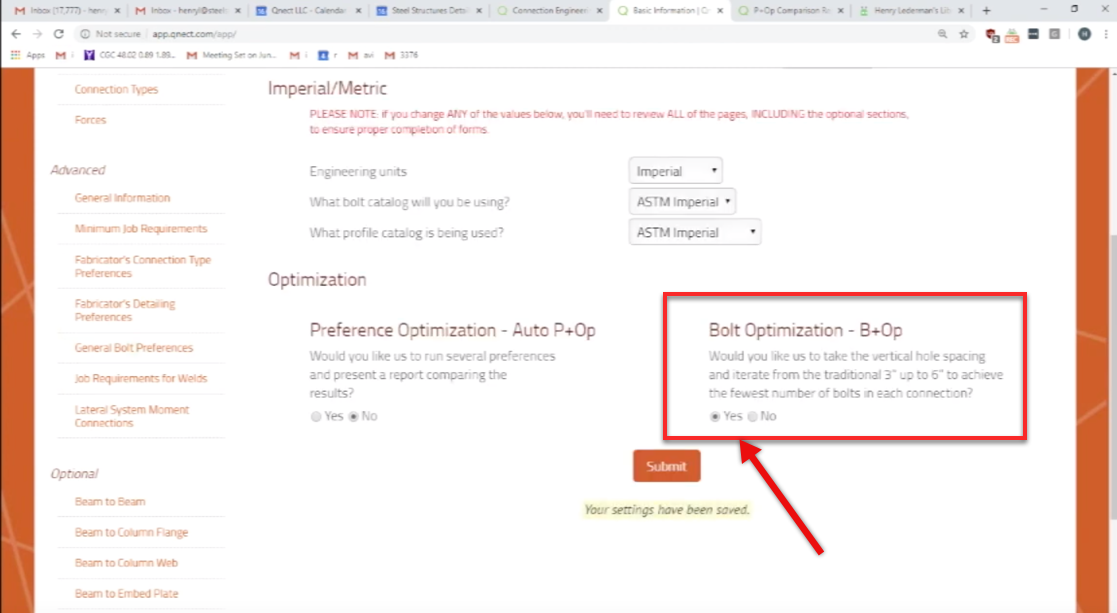
As you can see there are six bolts here and what we're going to do is we're going to re-engineer this joint with the same loads. We're going to delete it and we're going to select the beams. (We) hit button 1. We're gonna do GC BoP-1, submit and Qnect is right now engineering this connection and creating the component for the detailing aspect.
Let's see it should be ready already. And it is. So let's bring that back down and we see that in fact it has, as expected, engineered the joint with fewer bolts. We see we have six fewer bolts to buy. We have two fewer bolts to install in the shop and four fewer bolts to install in a field. Total of 12 your holes to drill cut or punch. If you add that up for hundreds and thousands of joints it really is consequential.
As a quick measure we typically save one to one and a half bolts per ton in a project. For example, we're doing an 18,000-ton project in Boston and we're saving 22,000 bolts that means 22,000 fewer to erect install in the field, which again reduces time to erect. But it also means 44,000 fewer holes to cut, drill or burn in the shop. Again, that means less time in the fabrication
...and of course we've just saved the purchase of 22,000 bolts.
So that is our optimization feature of lowering cost while simultaneously adding to the time buffer for prevention of schedule drift, reduction of time to erection. So that's optimization.
Alright so now let's talk about a new delivery system: delivering a fully connected model. You know a good way to start this is to quote from Tishman senior VP in New York, Allen Paull. He says here. “when we convinced the owner to allow us to prepare a connected model prior to bid we picked up three to four months.”
What is a connected model? A connected model is a stick model, as we saw at the
beginning, that has all of the connections in it and only the connections for all the main steel fully engineered approved turned over to the fabricator. It can be utilized during a bidding stage or transferred after.
Qnect is the infrastructure for this kind of delivery. We're being used, for example, on a 60-story in New York City thereafter the 40th floor and a job is only currently or hasn't even been bid yet. So if you think about it, if you have a project and you start the detailing 4, 6 or 8 weeks prior to the bid and the bid takes another eight weeks you're already sixteen weeks ahead of the time. When you add the speed of Qnect it starts to be truly meaningful. AISC is certainly a big proponent of us and they understands and talks about that we are part of the delivery of their initiative to reduce steel to erection by 50 percent by 2025.
So that's a fully connected model and the benefits of a fully connected model is:
dramatic time savings - you will find that the bids of more uniform there tend to be more efficient obviously
lowered costs - due to the optimization and in the reflection on project or to GC has reported that because so much is done so early and a lot of the issues are teased out prior to the fabricator and many other bidders; observation of reduction in extras from 30% to 10%
So now we'd like to open up the board for questions and Christian if you can send me whatever questions you have coming in okay okay
thank you
First question is: do we comply with OSHA?
Excuse me the answer of course everything that you would expect that's required in putting together for building historically and currently we conform with we can form it in a very flexible way.
Do you cover full connection engineering? The answer is, of course we do. As I said before we will take the contract we will engineer, connection engineering PE will be stamp our work and finish the rest of the of the job.
What jobs have you done? It runs the gamut 60-story building New York City, Seattle Airport, Kansas City Airport we've done data centers, Disney projects you can well imagine throughout the United States.
thank you for that question
Another question: What GC have you work with directly or indirectly or well that's it?
Thank you for that question so we've worked with Tishman, Whiting-Turner, we've got a job going with McCarthy we're being used, one or two projects with Clark, Jacobs Suffolk - and many more so yeah we've got quite a few opportunities.
What are the options for using Qnect in delivery of a steel building? Well, first you can bring connect to your bidders and ask them to work with us. That's the simplest. You can also scope Qnect as a requirement for bidders and they will contact us and we will build a model and support their unique preferences and help them with VE (Value Engineered) items. You can ask bidders to provide a credit deduction time and cost savings based on Qnect. Again, they will contact us those who are interested and we will work with them. You can also deliver a fully connected model.
Our ask of you we would like you to be you would like you to add us to your bidding lists and that way we can, once we receive a bid, we will reach out to you to learn of the fabricators who are bidding it, keep that confidential and bring the value to them. Unless you're delivering a connected model of course then we'll be earlier on or to design-assist which we can play a huge part in.
Second thing is we would like you to select an upcoming job and provide us with the design drawings and a Revit or IFC file if available. We will build the model, provide you VE data so you can see the impact of a software and a job that matters to you. That is always consequential in terms of really appreciating the opportunity. So we'd love for that to happen those two things and we will reach out to you and we hope you will reach out to us in the coming days.
So let me close and thank you and thank you for making time today. You can contact Christian and any one of us here. We look forward to working with you.
So thank you.
Access the Qnect app to enhance team collaboration and project efficiency. Sign in or create an account to manage communication and workflows with clarity and control.
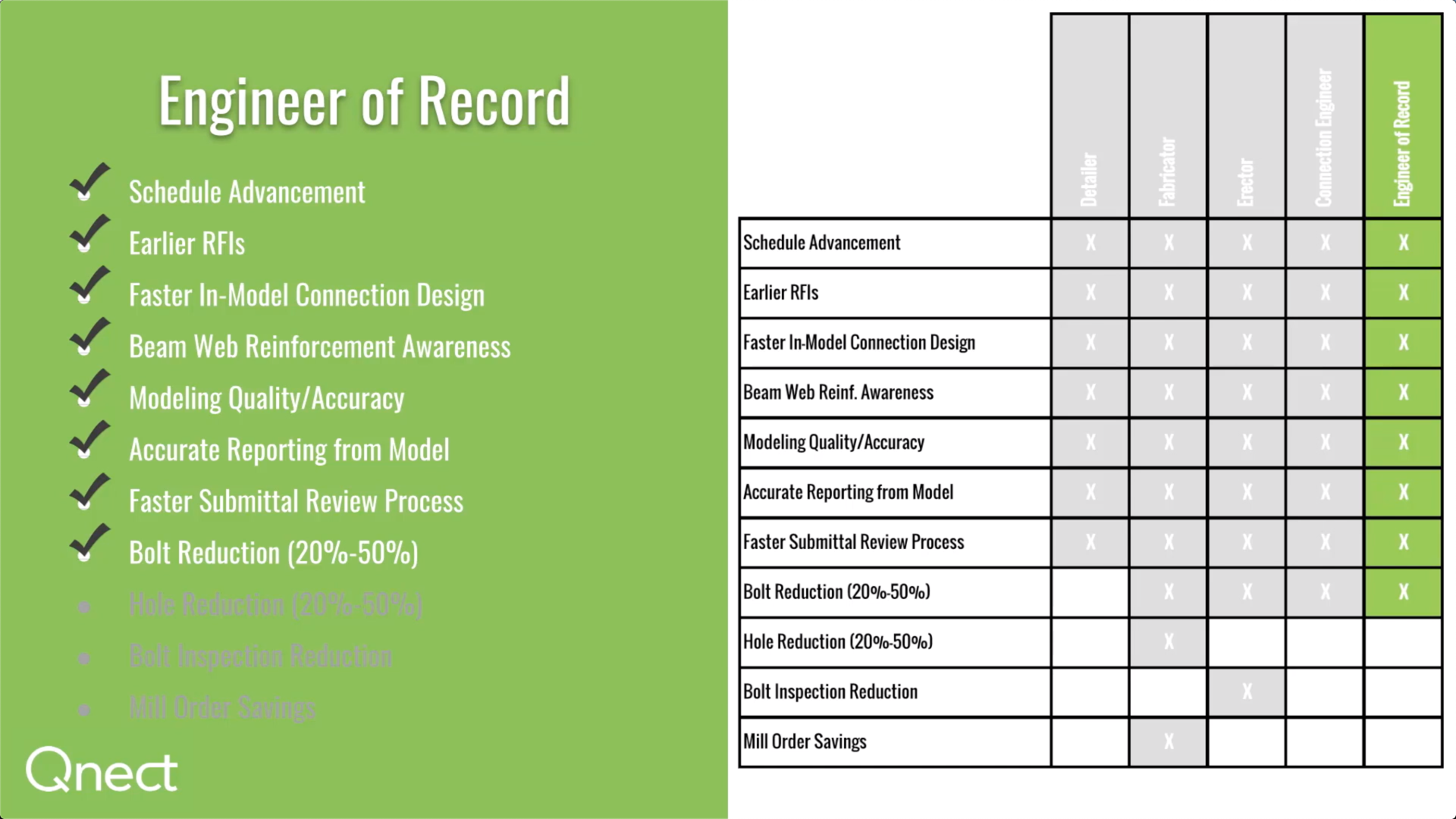
Are you a structural engineer - a Connection Engineer (CE) or an Engineer of Record (EOR)?Qnect's SaaS solution provides a solid Return on Investment...
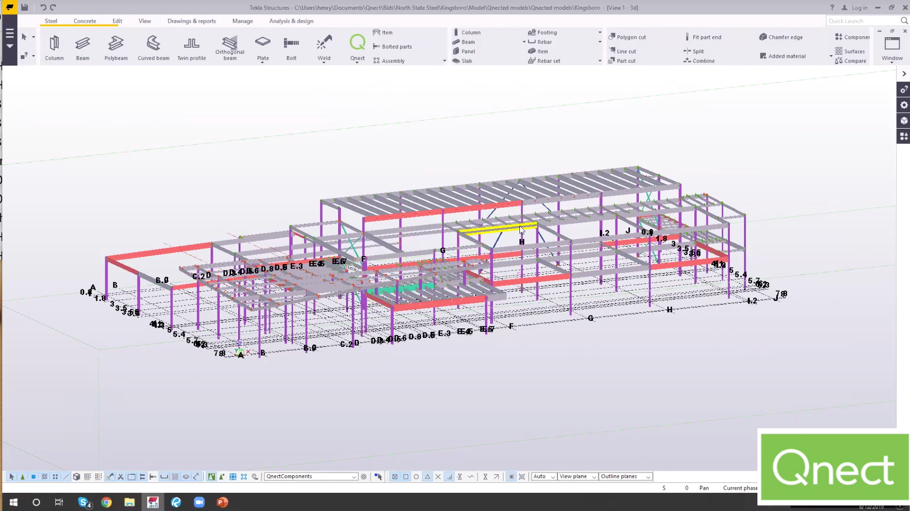
Many of Qnect's customers have shared with us just how much Qnect saves them from schedule drift. They said that the buffer gained by using Qnect has...
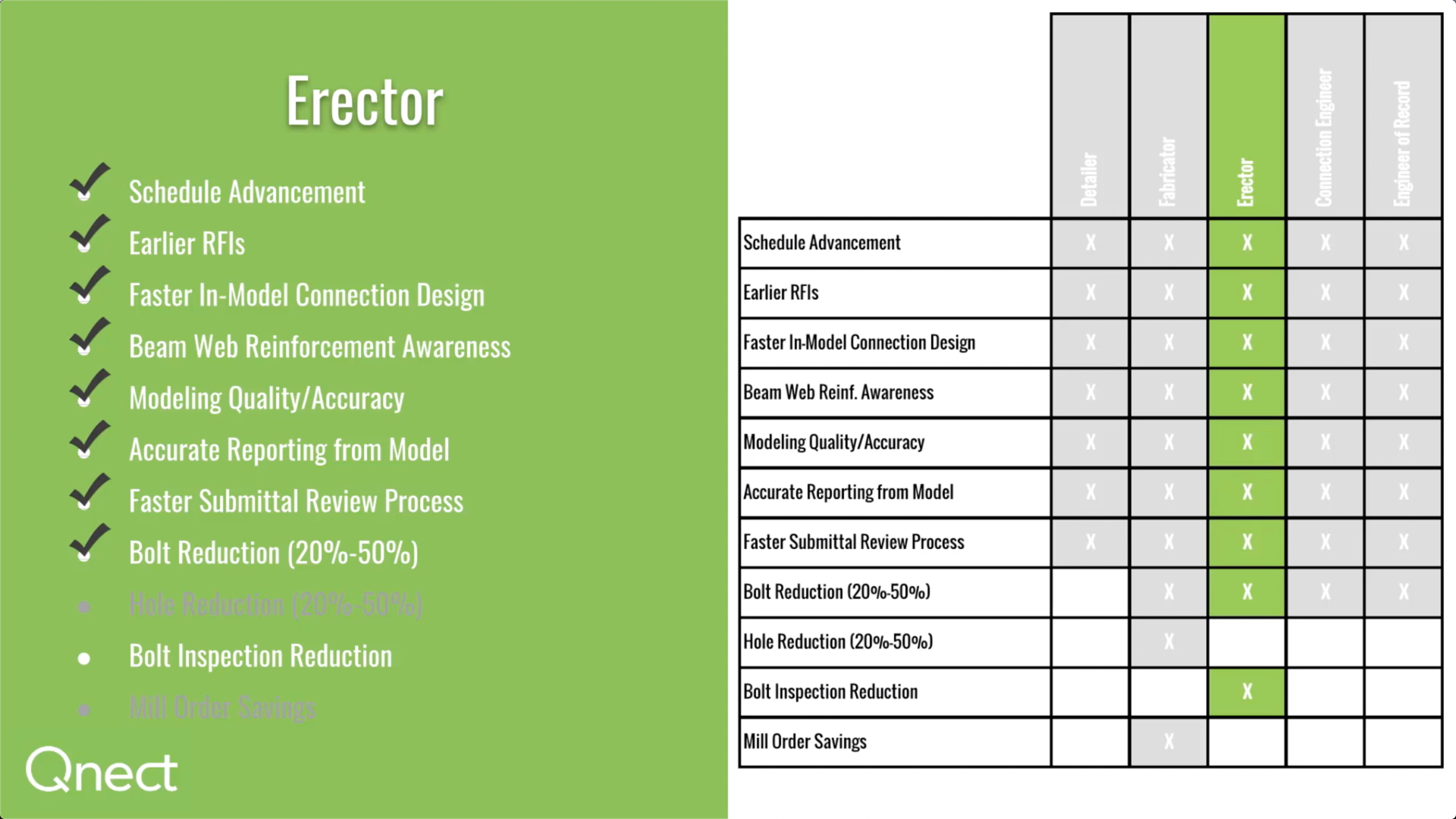
Are you a structural steel erector? If so and if you are like other erectors, you might feel left out of the process when engineers, connection...